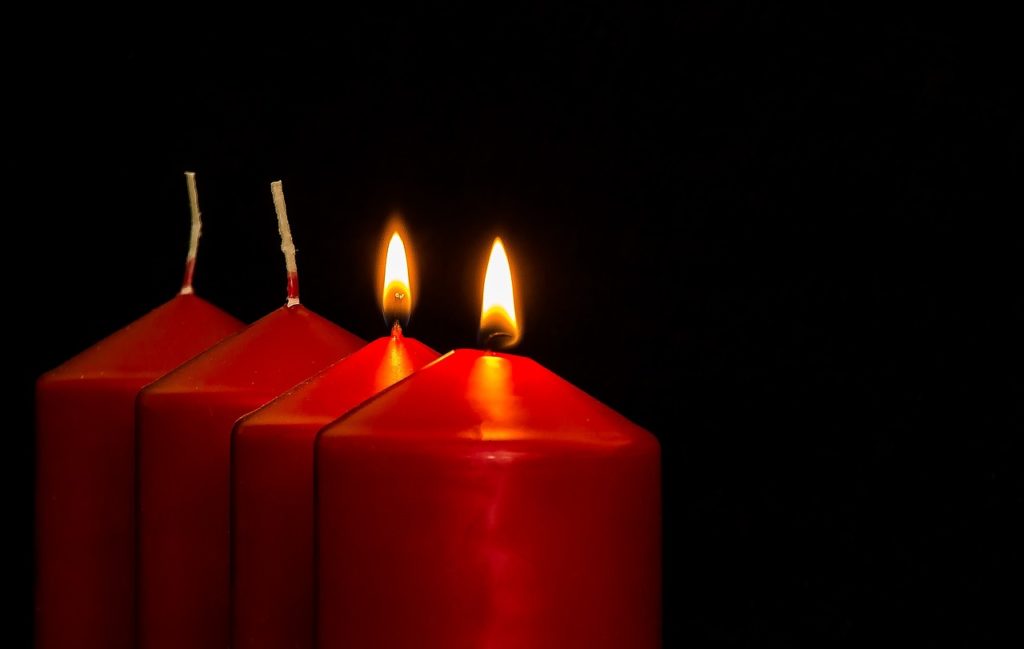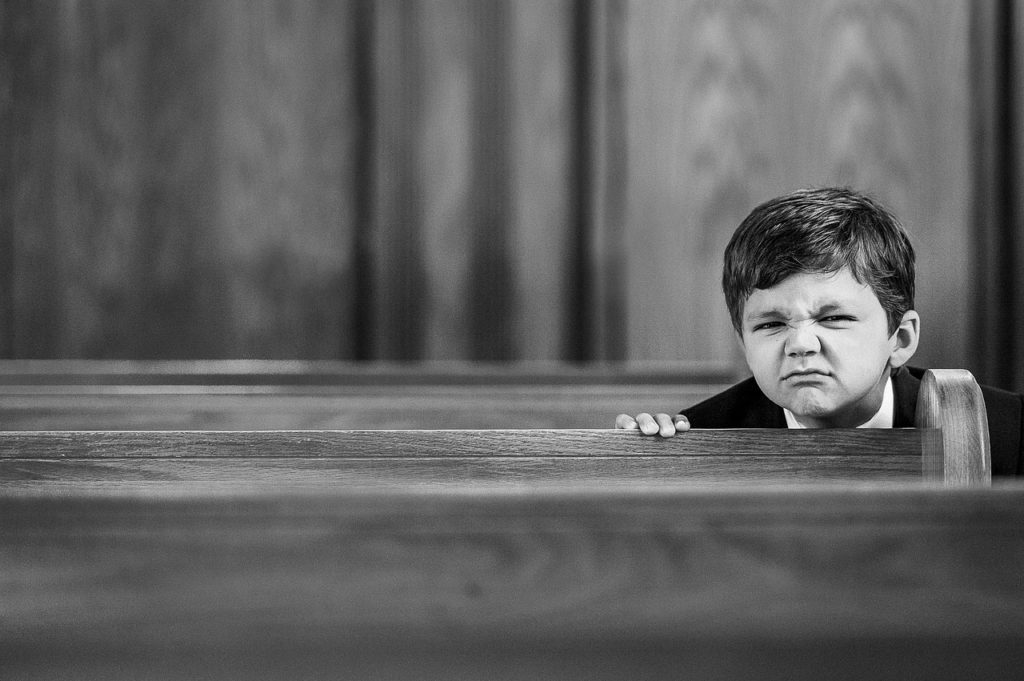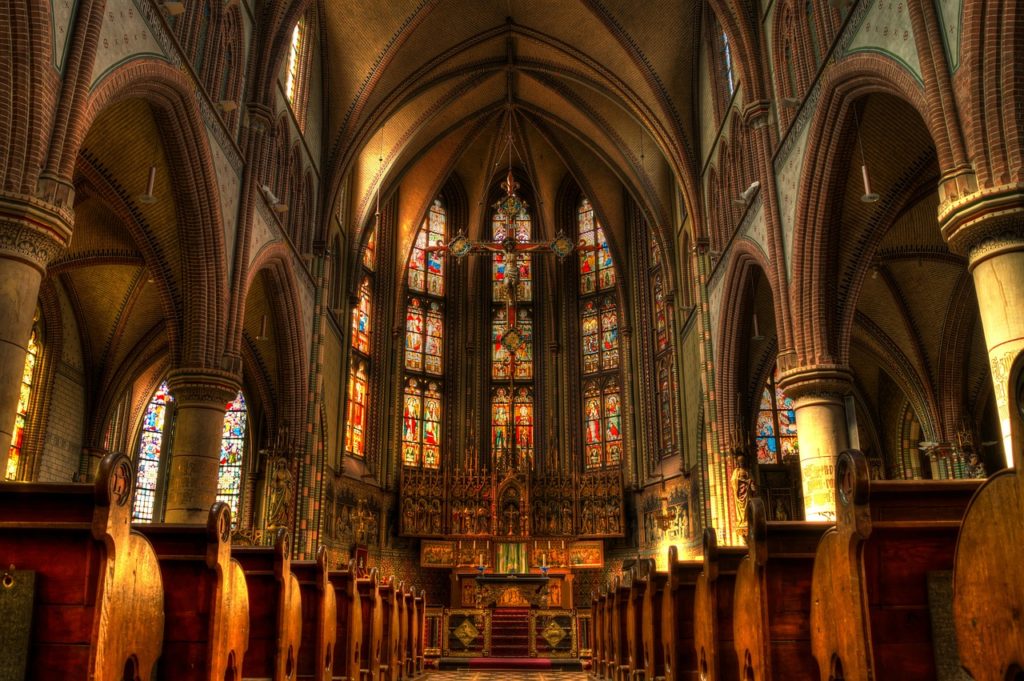
John Wheelwright’s faith is built on radical transcendence (God is there, but he’s so very, very far away). This results in his inability to experience a flourishing faith like that of Owen Meany or many of his spiritual mentors since. I can’t help but wonder if this is a result of John Irving’s failure to fully appreciate the importance of the incarnational view of reality–the view of reality that Owen, his creation, holds.
This would explain the two serious inconsistencies in the novel. One is a fundamental inconsistency regarding John Wheelwright’s leap of faith. The second is that because of the inadequate understanding of the incarnation, the novel, inadvertently, offers no alternative to meaninglessness, when it seems it is Irving’s intention to offer a least the option of hope.
The Paradox of Proof
In A Prayer for Owen Meany, John Irving presents two ways of understanding the material world. Material reality is either infused with the transcendent or it is closed to transcendence. In the novel, supernatural explanations of events are always countered with material ones. Irving does this so that he can be faithful to the freedom necessary to faith as articulated by the epigraph of Fredrick Buechner at the beginning of the novel. It reads,
Not the least of my problems is that I can hardly even imagine what kind of an experience a genuine, self-authenticating religious experience would be. Without somehow destroying me in the process, how could God reveal himself in a way that would leave no room for doubt? If there is not room for doubt, there would be no room for me.
More so now than ever before, we see this type of freedom in secular society. Charles Taylor says that in modern society we have no compulsion to choose sides in the war between belief and unbelief. We live in “a kind of a no-man’s-land; except that it has got wide enough to take on the character rather of a neutral zone, where one can escape the war altogether” (Taylor 351).
Johnny would likely have lived in the “neutral zone” between belief and unbelief indefinitely, except for the miracle of Owen’s life and death. In this, Irving breaks the stalemate and forces the narrator to choose in favor of belief. Although Irving offers Rev. Merrill as the doubting Thomas, when taken together, the circumstances surrounding Owen’s death suffer no other interpretation—God exists. A leap of faith is no longer required. Johnny has no choice but to believe and then, to ask Buechner’s question, can there be any room for John Wheelwright? In forcing faith upon his narrator, Irving seemingly broke his own rule. He went against the understanding of faith he so consistently presented through every other aspect of the novel.
The opposite of faith, is not doubt, but certainty. Wheelwright has certainty.
Parallels Between Owen Meany and Jesus
A second inconsistency that arises from what I believe to be Irving’s view of radical transcendence is that, although he attempts to offer hope, at least as an option, the novel ultimately offers no alternative to meaninglessness. Irving sets a hopeful tone to the novel, but he fails, ultimately, to deliver any hope because the author’s secular perspective forces the actions of Christ to be duplicated by Owen. Thus, Owen functions as a substitute Christ, rather than an imitation.
Irving draws very clear the parallels between Owen Meany and Jesus Christ.
One of the persistent mysteries in the book revolves around the “UNSPEAKABLE OUTRAGE” perpetuated by the Catholic Church on the Meany family. It is revealed at the end of the novel that Mr. Meany believes, and communicated his belief to Owen when he was eleven years old, that Owen’s was a virgin birth. Ambiguity certainly surrounds this claim, not the least of which is the insanity of Owen’s mother, so it is not clear whether her insanity is the cause of the UNSPEAKABLE OUTRAGE or a result of it.
More parallels: Later, in 1953, Owen’s role in the Christmas pageant will not be suspension from the rafters as the transcendent announcing angel, but instead he will replace the babies and play the more immanent role of the Little Lord Jesus. Although he never raised anyone from the dead, it was said that his voice “could bring those mice back to life!” (17). To reflect the unusual quality of his voice, Irving represents Owen’s words using all capital letters, and the effect is much like that of a red letter edition of the Bible in which the words of Christ are set off from the rest of the text. Then there is Owen’s Mary Magdalene relationship with Hester the Molester. In the chapter called “The Voice,” he preaches against the establishment, occasionally breaking its laws, and he attacks the hypocrisy of the new headmaster of Gravesend Academy. Consequently, he is brought before the Sanhedrin –he is called irreverent (289) and antireligious (409, 413).
The Passion of Owen Meany:
Eventually Owen’s enemies “crucified him” (398-99) after being passed between the Academy’s chaplain and psychologist—Herod and Pilot, if you will. He even repeats the words of Christ on several occasions; “FATHER FORGIVE THEM FOR THEY KNOW NOT WHAT THEY DO,” (151) is one example. Johnny, in a frustrated attempt to thwart “Owen’s stubborn pursuit of a heroic death, . . . plays Judas to Owen’s Christ, betraying him” (Haynes 82) to his commander. Owen has a Gethsemane experience the day before his death (Irving 585). The most significant parallel to Christ is of course his sacrificial death. Owen death does not achieve cosmic redemption—he saves a group of Vietnamese orphans—but he willingly gives his life for others, just the same. There is even a final Pieta when the nun cradles him in her arms.
To Duplicate is not to Imitate
In attempting to create meaning through the illumination of the Christ of the Christian faith, Irving instead undercuts meaning, by creating a duplicate Christ rather than an imitation of Christ.
For Irving, the real Christ is too transcendent, so he has to create “a new character of God’s holy choosing” (542). A Christ figure can function as a powerful metaphor, but in Owen Meany, Irving instead gives us a literal Christ.
The meaning of Owen Meany is not found in the focal point that is Jesus Christ; the meaning of Owen Meaning goes no further than Owen Meany. Thus, John Wheelwright’s “belief is notably a-christological. Owen, John’s Christ figure, plays a larger role in his thoughts than does Christ” (Sykes 63).
Irving falls into this trap because he does not really have an adequate understanding of the incarnate Christ; his Christ is radically transcendent.
The effect of Irving’s non-incarnational spirituality shapes the novel’s conclusion. As a duplicate Christ, there are many parallels between the life of Owen and that of Jesus. Owen’s sacrificial death is the most significant parallel, for his whole life has meaning in his death.
Resurrection is Only in Christ
Charles Taylor says that death, particularly the moment of death, “is the privileged site from which the meaning of life can be grasped” (723). Irving understands this and therefore structures the plot accordingly; the funeral and almost all of the resolutions occur before the recounting of the events surrounding Owen’s death. Death brings out meaning for both the one who faces his own death as well as for the bereaved. Those who have lost a loved one “struggle to hold onto the meaning they have built with the deceased” while at the same time letting go. The purpose of our funeral rites and ceremonies is to “connect this person . . . with something eternal” (722).
Within the world of the novel, this is the reason for John Wheelwright to tell the story of Owen Meany. Yet for Johnny, that eternal is so far away that to link Owen to it is to lose Owen. With the loss of Owen, is the loss of meaning.
Irving attempts to offer Wheelwright, and his readers, a resurrection of sorts. Owen is regularly linked with death. His skin is “the color of a gravestone” (2); he encounters and scars off the Angel of Death; his summer job is working in his father’s monument shop, and in the army, he becomes a casualty assistance officer in the army. There is very little irony behind Owen’s statement to Johnny the day before his death that he is “IN THE DYING BUSINESS” (604).
Irving builds suggestions of rebirth into the novel as well. The setting for the story is Gravesend—graves end; Owen wrote for the school newspaper, “The Grave,” under the penname, “The Voice”: the voice from the grave (Haynes 79). The pattern of rebirth is built into the structure of the novel. Tabitha Wheelwright’s death is recounted in the first chapter, but in the second we meet and get to know the living Tabby; after her death in chapter one, she is, in effect, brought back to life in chapter two. Lastly, Owen’s sacrificial death occurs in the Phoenix airport, named for the mythical bird that is reborn from its own ashes (79).
By associating Owen with the pattern of death and rebirth, Irving’s attempts to connect Owen to the transcendent, but because, for Irving, the transcendent is so distant, the attempt fails.
Eternal Flourishing
In a secular society, there is no sense of flourishing in and after death. Such is the case with Johnny following Owen’s death. So all he can do is tell a story about Owen’s life. The last line of the novel is the prayer for Owen Meany. John Wheelwright prays, “Oh God—Please give him back! I shall keep asking you” (617). It is a prayer for John Wheelwright to have his own meaning back – in its immanent form.
After his conversion, Irving’s narrator believes in the transcendent and through the writing of the book he seeks meaning, but he will not seek it in the incarnate Christ; he will seek it in His duplicate. Therefore, with Owen dies meaning. As things stand at the novel’s end, Owen is too far away—just like the God to whom the narrator offers his final prayer.
We live in a secular age and, therefore, belief in God is not a given as it once was. In A Prayer for Owen Meany, John Irving honestly presents this reality by presenting characters in various states of belief and unbelief. In almost every case, he maintains ambiguity by undercutting both faith and doubt. However, in the life and death of Owen Meany, he gives us a miracle. Within the world of the novel, there is no explanation other than the transcendent puncturing the ordinary world. This reflects Irving’s view of the radical otherness of the transcendent that governs the novel.
The inadequacy of this view is seen in the continued struggles of the adult John Wheelwright after his conversion. He fails to achieve fullness because, once he accepts the presence of God, he cannot encounter him. Therefore, he is stuck in between. He believes in God, but only as an impersonal force who has poked his celestial finger into objective reality and for all he knows, that divine digit may since have been amputated like his own.
John Wheelwright’s story illustrates that in a secular, closed immanent world, Christians have to “struggle to recover a sense of what the Incarnation can mean” (Taylor 753). That is, to understand that God does not just poke, but He’s got the whole world in his hands. And in that reality, we can find the fullness we desire.
This post concludes my chapter by chapter commentary through A Prayer for Owen Meany by John Irving. If you missed these posts, you can read the first one here.
Other Resources:
Haynes, Stephen. “Footsteps of Ann Hutchinson and Frederick Buechner: A Religious Reading of John Irving’s A Prayer for Owen Meany.” Religion and Literature. 27.3 (1995): 73-98.
Sykes, John. “Christian Apologetic Uses of the Grotesque in John Irving and Flannery O. Connor.” Literature and Theology 10.1 (1996) : 58-67.








